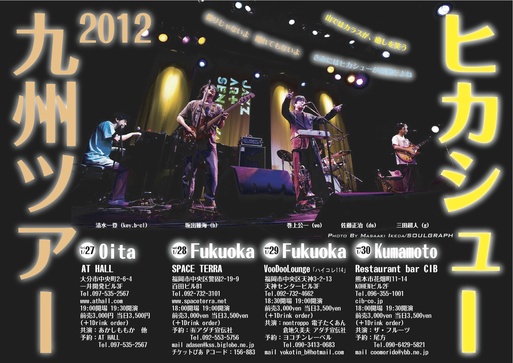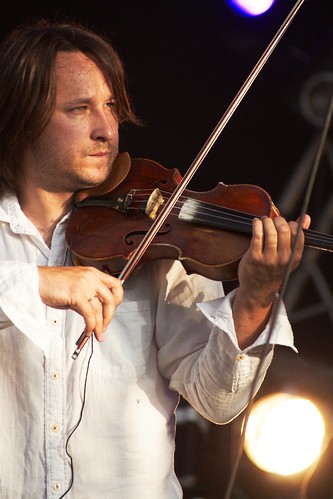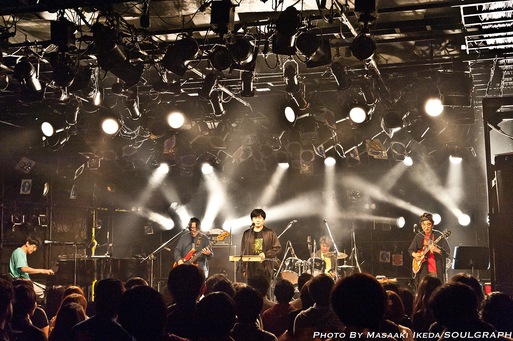Formed in 1978, Hikashu has some changes in its personnel during their 30+ years of existence.
The following is a chronologically listing of various line-ups of the band. This is not strictly accurate, and provide here only for referential purposes. The work is still in progress, and subject to be revised any time when needed. Hope this helps.
Please note: "Release" is not complete, selected titles only.
Hikashu #0 (Winter 1977 to Summer 1978) also later known as Pre-Hikashu
Personnel:
Yamashita Yasushi (synthesizer), Inoue Makoto (synthesizer), occasionally with 2-8? musicians on various ethnic instruments including Wakabayashi Tadahiro (sitar), Sakasegawa Seiji (tabla), and choirs
Release:
Pre-Hikashu (Transonic, 2004) a collection of live recordings in 1977-1978
Strictly speaking, this is the original Hikashu. The group played improvising ambient music, sometimes flavored with ethnic timbre. They had no leader, also the personnel and the instrumentation were always in flux (only Yamashita and Inoue were the permanent members). Dissolved after several performances in public, they had never been in recording studio, but some live recordings are survived and later issued. Pre-Hikashu is the name dubbed afterward for making a distinction of them from the -other- Hikashu. The partnership between Yamashita and Inoue still continues. Also, Wakabayashi and Sakasegawa has been active as musician and educator to this day.
Hikashu #1 (August 1978 to Fall 1980)
Personnel:
Makigami Koichi (vocal, bass, cornet), Mitama Masamichi (guitar), Yamashita Yasushi (synthesizer), Inoue Makoto (synthesizer), Tobe Satoshi (alto saxophone, guitar)
This is the first line-up of Hikashu as we all know. From the start, contrary to Pre-Hikashu, the group had a leader, Makigami Koichi. All the members were Makigami's friends. At first he gathered them to make a musical accompaniment for his underground theater troup, Ulysses. They worked together nicely and Makigami decided to form a band instead of theatre, and concentrate on music. Upon a suggestion of Yamashita, the band called themselves Hikashu. In 1978, they rented a small house in residential area of west Tokyo, lived together, started composing, experimentating, and recording various demo tapes which were later issued as the 1978 album. Their communal living continued almost a year.
Release:
Hikashu (Toshiba EMI, 1980)
Natsu [Summer] (Toshiba EMI, 1980)
1978 (Toshiba EMI, 1996)
Hikashu #2 (Fall 1980 to late 1981)
Personnel:
Makigami Koichi (vocal, bass, cornet), Mitama Masamichi (guitar), Yamashita Yasushi (synthesizer), Inoue Makoto (synthesizer), Tobe Satoshi (alto saxophone, guitar), Sensui Toshiro (drums)
There is a general impression that early Hikashu was a drumless group. But actually they employed several drummers at the first recording session for Toshiba-EMI in fall 1979, and started using a drummer for gigs in spring 1980.
Sensui Toshiro is a drummer, played for various new-wave bands including Halmens and 8 1/2, and he became the first regular drummer for Hikashu in autumn 1980. In late 1981, Tobe decided to quit the band, and retired from music.
Release:
Uwasa No Jinrui [The Human Being] (Toshiba EMI, 1981)
Hikashu #3 (early 1982 to late 1982)
Personnel:
Makigami Koichi (vocal, bass, cornet), Mitama Masamichi (guitar), Yamashita Yasushi (synthesizer), Inoue Makoto (synthesizer), Sensui Toshiro (drums)
Release:
Minzoku No Saiten [Festival of Nations] (Toshiba EMI, 1982) Makigami's first solo album
In early 1982, Makigami recorded the first solo album with Hikashu, plus some guests.
In late 1982, Sensui decided to quit the group. Since his departure, the band had been using various drummers (and saxophonists). This mobilization of the personnel continued for several years.
Hikashu #4 (December 1982 to February 1983)
Personnel:
Makigami Koichi (vocal, cornet), Mitama Masamichi (guitar), Yamashita Yasushi (synthesizer), Inoue Makoto (synthesizer), Sakaide Masami (bass)
Release:
Watashi Wa Baka Ni Naritai (Toshiba EMI, 1983) single
Watashi No Tanoshimi [My Pleasure] (Balcony, 1984) music for fashion show
Sakaide Masami, a young session musician, joined the group in December 1982. So Makigami no longer had to play bass and concentrate on vocal and cornet.
In Februrary 1983, Yamashita parted with the group and decided to pursue different direction of music. His partnership with Inoue continued under a new name, Inoyama Land.
Hikashu #5 (March 1983 to late 1984)
Personnel:
Makigami Koichi (vocal, cornet), Mitama Masamichi (guitar), Inoue Makoto (synthesizer), Sakaide Masami (bass)
Release:
Nihon No Egao [The Smiles of Japan] (Spinoza, 1983) maxi single
Mizu Ni Nagashite [Forget and Forgive] (Eggman, 1983)
Around this time, Inoue started solo activity called Godzilla Legend. It was a reinterpretation of the music from classic Japanese monster movies, and all the Hikashu members participated in it. The response for the project was enormous, and it spanned three albums and a video eventually.
Hikashu #6 (early 1985 to late 1988)
Personnel:
Makigami Koichi (vocal, cornet), Mitama Masamichi (guitar), Inoue Makoto (synthesizer), Sakaide Masami (bass), Nomoto Kazuhiro (reeds), Taniguchi Masaru (drums)
Release:
Soba De Yokereba (Balcony, 1985) instrumental music for a ballet troup
Ningen No Kao [Human Faces] (Crown, 1986)
Live (Puzzlin, 1988)
Nomoto and Taniguchi already took part in recording sessions of Hikashu circa late 1983. It could be interpreted that they officially joined the band in 1985, because "Soba De Yokereba," released in that year, they were credited as regular member.
Unfortunately, "Ningen No Kao" is the only full album by this line-up since Taniguchi suddenly passed away in 1988. It was a tremendous loss for the band. "Live," a selection from various live recordings in 1987-1988, was a release dedicated to his memories.
Hikashu #7 (early 1989 - late 1991)
Personnel:
Makigami Koichi (vocal, cornet), Mitama Masamichi / Mita Freeman (guitar), Inoue Makoto (synthesizer), Sakaide Masami (bass), Nomoto Kazuhiro (reeds), Tsuno Ken (drums), Otomo Yoshihide (turntables, 1990 only)
Release:
Teicho Na Omotenashi [Courteous Hospitality] (Vap, 1990)
Hanauta Hajime (Vap, 1991)
Tsuno, a young jazz drummer, joined the group. In 1990, Otomo came to play with the band through Nomoto, his old friend, and had been a regular member only during that year. Around 1991, Mitama Masamichi renamed himself as Mita Freeman.
Hikashu #8 (early 1992 - late 1995)
Personnel:
Makigami Koichi (vocal, cornet), Mita Freeman (guitar), Sakaide Masami (bass), Nomoto Kazuhiro (reeds), Tsuno Ken (drums), Torsten Rasch (keyboard)
Release:
Acchi No Me, Kocchi No Me [Dazzling Eyes] (Tokuma Communications, 1993)
Orguss 02 OST (Tokuma Communications, 1993) soundtrack for an animation series
Inoue, an original member, left the group. His replacement was Torsten Rasch from Germany.
Hikashu #9 (early 1996 - 2002)
Personnel:
Makigami Koichi (vocal, cornet), Mita Freeman (guitar), Sakaide Masami (bass), Nomoto Kazuhiro (reeds), Torsten Rasch (keyboard), Niida Kozo (drums), Yoshimori Makoto (keyboard)
Release:
Kawatteru (Toshiba EMI, 1996)
Carp and Gazpacho (Makigami, 2009) maxi single, overdubbed in 2009
Circa 1995, Tsuno left the group. Niida Kozo, a veteran rock drummer mainly known for his tenure with a popular rock band called RC Succession, and Yoshimori, a young keyboard player, became the regular members.
Shortly after leaving the group in 2002, Nomoto passed away by cancer. In the same year, Yoshimori left the band too.
Hikashu #10 (2003 - late 2004)
Personnel:
Makigami Koichi (vocal, cornet, theremin), Mita Freeman (guitar), Sakaide Masami (bass), Niida Kozo (drums), Shimizu Kazuto (keyboard, bass clarinet), Sato Masaharu (percussion)
Torsten Rasch decided to go back to Germany, then Makigami recruited Shimizu and Sato. They were veteran musicians, mainly known for their activities in progressive rock and improvised music scene. So, for a while the group had two percussionists. Then Niida left the group in late 2004.
Around this time Makigami started playing a theremin in public, after several years of preparation.
Hikashu #11 (early 2005 -)
Personnel:
Makigami Koichi (vocal, cornet, theremin), Mita Freeman (guitar), Sakaide Masami (bass), Shimizu Kazuto (keyboard, bass clarinet), Sato Masaharu (drums)
Release:
Ten Ten (Makigami, 2006)
Ikirukoto (Makigami, 2008)
Ten Ten Ten (Makigami, 2009)
This is the current line-up of Hikashu. The history continues.



























